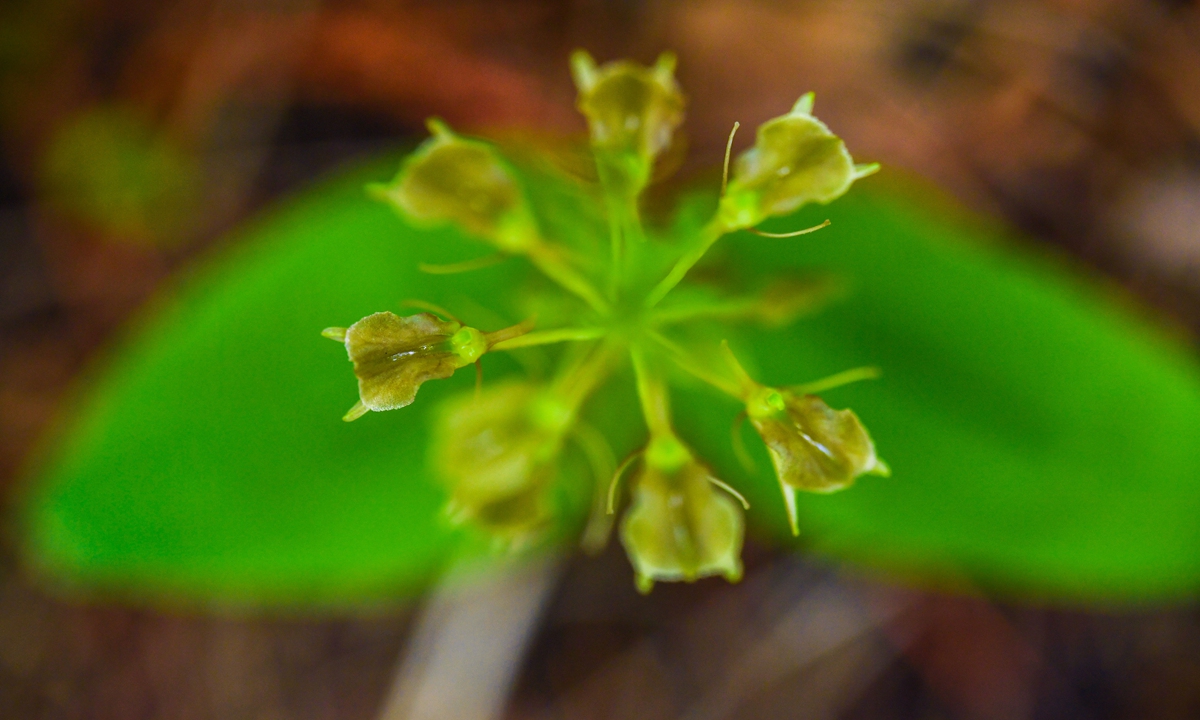
Orchid spieces Photo: VCG
Bulbophyllum wolongense, a new type of new orchid species only found in Southwest China's Sichuan Province, was recently discovered by researchers in the province's Wolong National Nature Reserve.
Named after the national nature reserve, the Bulbophyllum wolongense is called Wolong Juanban Lan in Chinese, which means orchid with curled petals.
Each flower consists of three duckbill-shaped petals. The flower is yellow with a purplish-red center. What accentuates the flower are oval-shaped leaves. The orchid species grows on tree trunks above altitudes of 1600-1700 meters.
Through technological means such as morphological study and DNA molecular analysis, Hu Guangwan, the project's lead researcher said that the orchid is a new species that has never been found before and is endemic to Sichuan Province according to the plant's preference in habitation.
Hu said the discovery "indicates the rich plant diversity of the nature reserve site," while it also holds great significance for biodiversity research in Sichuan Province.
The recently identified Bulbophyllum wolongense is the sixth new plant species discovered at the nature reserve since 2022, when a project to monitor plant diversity in the area was carried out.
In February 2021, researchers found a plant belonging to the orchid family Lycopodium on the edge of a cliff in the reserve.
Xiao Guangyu, a botanical expert told the Global Times that orchids are very "picky" about their environment. Being able to discover them can also reflect that a place "has a good and sustainable biodiversity."
Located in the southwest of Wenchuan county, Wolong national nature reserve has always been a "demonstration spot" for China's rich biodiversity resources.
Including not only unique plants like the Bulbophyllum wolongense, the reserve is also a home to China's national treasure, the panda, and also in 2018, a leopard was spotted at the site for the first time.
Hu said that the reserve has spent more than 60 years preserving the biodiversity of the area.
"With the increasing efforts being put into conserving the natural area, I see the goal to discover more new plant species can be fulfilled in future," Hu noted.
URL: https://www.seeglobalnews.com/read-1899.html